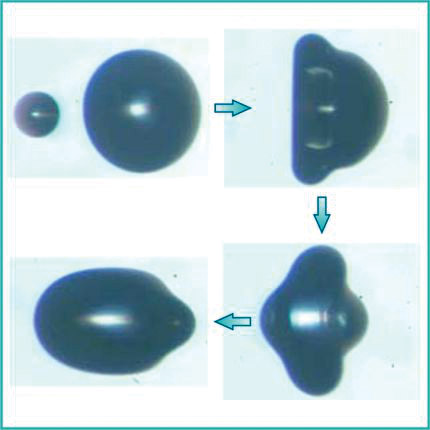New insights into droplet collisions
DOI: 10.1063/PT.3.1465
New insights into droplet collisions. Ocean mists and car engines are among the countless environments whose behavior is influenced by the dynamics and interactions of liquid droplets, and by droplet collisions in particular. Such collisions have varied outcomes—the droplets might smoothly merge with little deformation, bounce off each other, coalesce following large deformation, or separate after temporarily coalescing. To date, most research has focused on collisions between identical droplets, for which the outcomes depend on the impact parameter and the ratio of kinetic energy to surface tension. In new work on droplets of unequal size, Chung Law and colleagues at Princeton University have experimentally demonstrated that the size disparity can significantly increase the parameter range over which the droplets permanently coalesce. The team’s theoretical model, based on energy balance and scaling arguments and verified experimentally, reveals why: As surface tension pulls the merged, deformed droplet back toward a spherical shape, increased viscous dissipation through internal motion reduces the energy available for separation. The extended coalescence region, argue the researchers, may hold promise for rocket engines fueled with so-called hypergolic propellants that ignite when they come into contact, since the enhanced coalescence and mixing of fuel and oxidizer droplets should facilitate the ignition. (C. Tang, P. Zhang, C. K. Law, Phys. Fluids 24, 022101, 2012. doi:10.1063/1.3679165
More about the Authors
Richard J. Fitzgerald. rfitzger@aip.org







